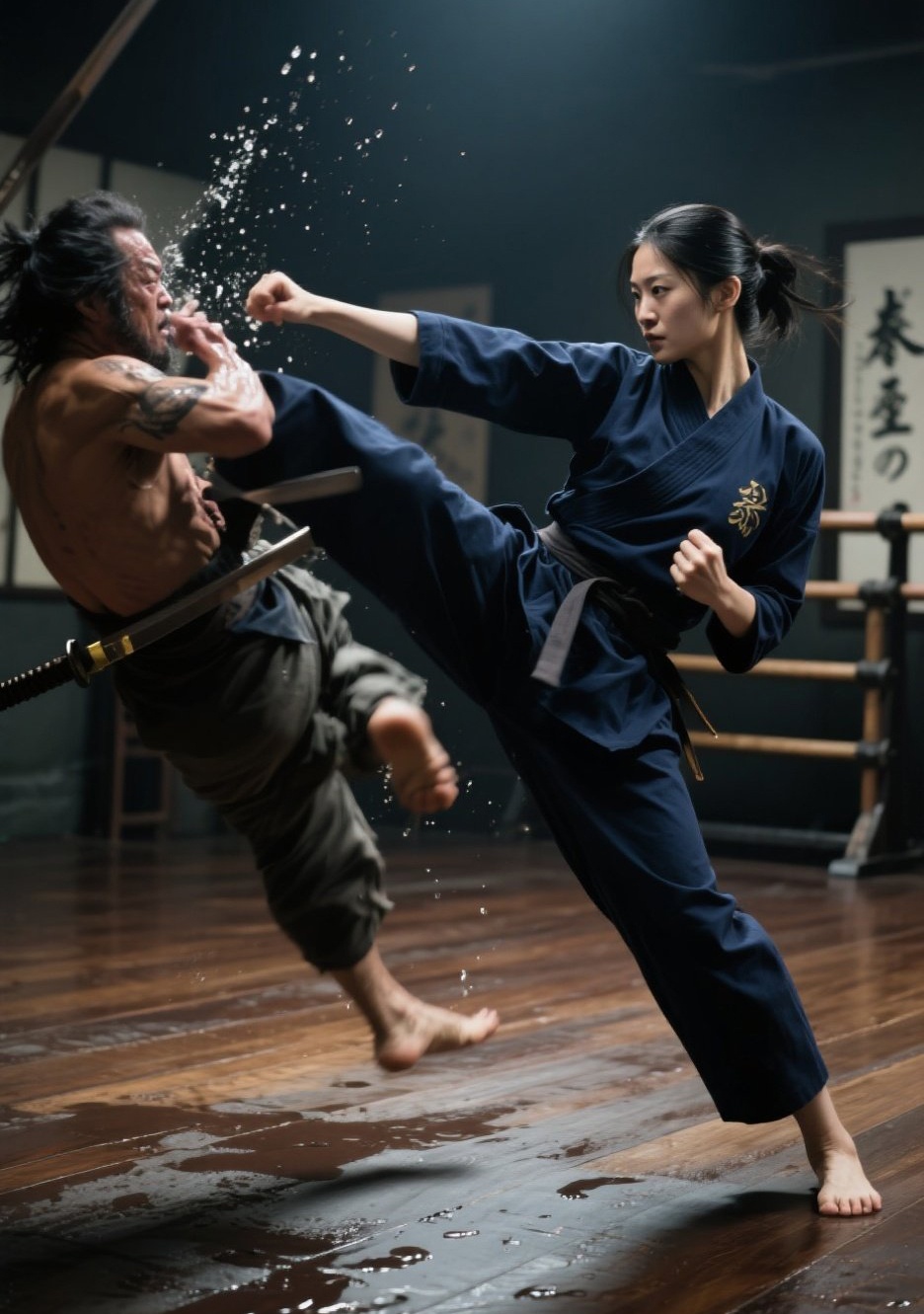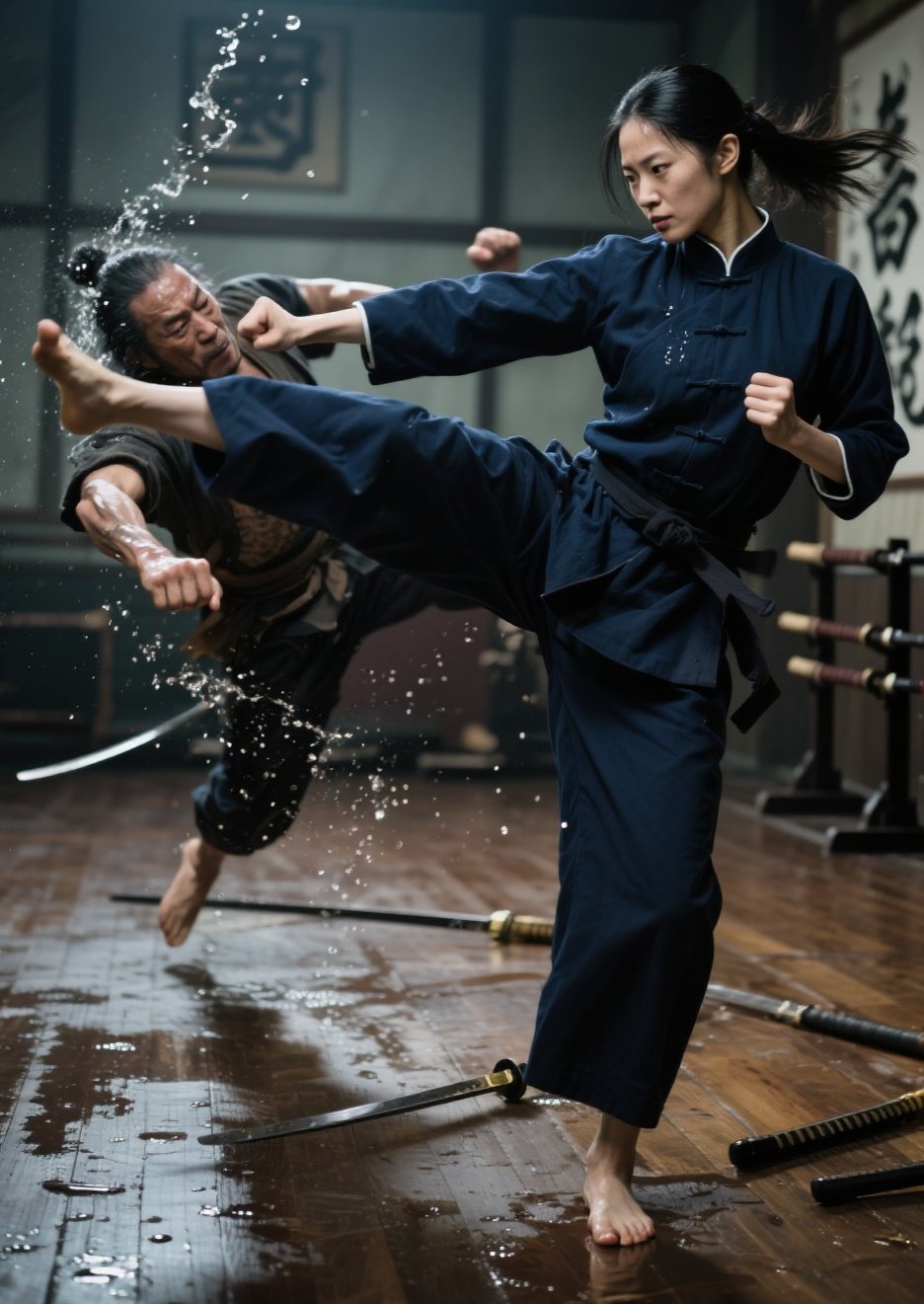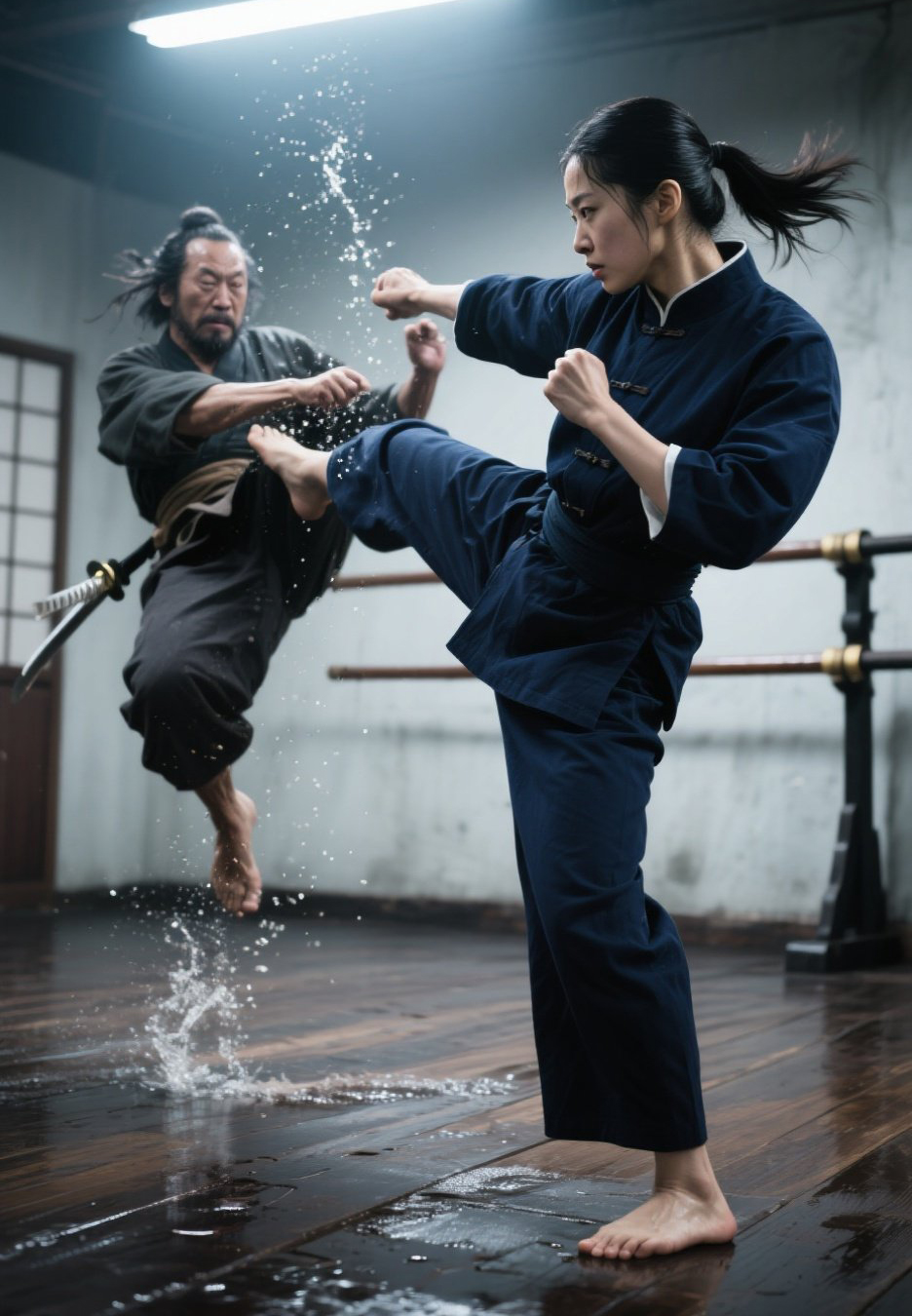Kung Fu: The Ocean of Chinese Martial Arts
What it Means: "Kung Fu" (Gong Fu) translates roughly to "skill achieved through hard work and time." It refers not just to fighting techniques, but to any discipline requiring dedication and mastery – including painting, calligraphy, or cooking. In the martial context, it encompasses hundreds of distinct styles developed in China over millennia.
Incredible Diversity: Kung Fu styles vary enormously. They can be broadly categorized (though with overlap) as:
Northern vs. Southern: Northern styles often emphasize long-range techniques, acrobatics, high kicks, and mobility (e.g., Chang Quan, Northern Shaolin). Southern styles often focus on strong stances, powerful hand techniques, and close-quarters combat (e.g., Hung Gar, Choy Li Fut, Wing Chun).
External (Wai Jia) vs. Internal (Nei Jia): External styles prioritize physical strength, speed, conditioning, and obvious power. Internal styles emphasize using the mind, breath, relaxation, structure, and internal energy (Qi) to generate power, often appearing softer but being highly effective (e.g., Tai Chi, Baguazhang, Xingyiquan). Wing Chun incorporates significant internal principles.
Animal Styles: Many styles imitate animal movements and strategies (e.g., Tiger, Crane, Praying Mantis, Snake, Leopard).
Common Threads: Despite the diversity, most Kung Fu styles share connections to Chinese philosophy (Taoism, Buddhism, Confucianism), concepts like Yin/Yang balance, and the development of discipline, respect, and self-cultivation alongside combat skills. Training typically involves forms (taolu) – choreographed sequences of techniques – as well as basics, conditioning, and eventually application drills and sparring.

Wing Chun: The Streamlined Southern Specialist
Wing Chun is a specific, relatively modern (circa 300 years old) style originating in Southern China. It stands out within the Kung Fu family due to its unique design principles:
Efficiency & Directness: Created (according to legend, by the nun Ng Mui) to allow a smaller, weaker person to overcome a larger, stronger attacker quickly. It ruthlessly eliminates flashy, acrobatic, or long-winded techniques.
Centerline Theory: The core concept. Wing Chun practitioners relentlessly control and attack their opponent's vertical centerline (the core of the body's balance and vital targets) while defending their own.
Simultaneous Attack & Defense: Movements are designed to block/deflect and strike in the same motion, maximizing efficiency and overwhelming the opponent.
Economy of Motion: Uses the shortest possible distance between points. Punches travel straight from the chest (Chain Punches), kicks are low and targeted (knees, thighs). There's minimal wind-up or telegraphing.
Close-Range Combat Mastery: It excels in the trapping range (arms entangled). Its primary goal is to close the distance against longer-range attackers and dominate the infight.
Sensitivity & Reflex Development - Chi Sao: The hallmark training method. "Sticky Hands" drills teach practitioners to maintain contact with an opponent's arms, developing lightning-fast reflexes, the ability to "read" force and intention, and apply techniques fluidly under pressure.
Structure & Relaxation: Power is generated through correct skeletal alignment (structure) and relaxed muscles, allowing for speed and redirecting an opponent's force rather than meeting it head-on with brute strength.
Focused Curriculum: Relies on a smaller core set of techniques (straight punches, palm strikes, low kicks, elbows, specific blocks/traps) honed to a high degree of effectiveness. Key training tools include the Wooden Dummy (Mook Yan Jong) and specific forms (Siu Nim Tao, Chum Kiu, Biu Jee) that ingrain principles rather than being lengthy performances.

Wing Chun vs. The Broader Kung Fu Landscape: Key Differences
| Feature | Wing Chun (Specific Style) | Kung Fu (General Category) |
|---|
| Scope | One specific system | Hundreds of diverse systems |
| Philosophy | Ultimate efficiency, directness, close-range dominance. Minimal movement, maximum effect. | Varies wildly: External power, internal energy, animal mimicry, acrobatics, long-range, etc. |
| Techniques | Highly focused: Straight punches, chain punches, low kicks, centerline attacks, trapping. Small core set. | Extremely diverse: High kicks, jumps, sweeps, throws, complex hand strikes, diverse weapons, animal techniques. Vast repertoire. |
| Range | Specializes in CLOSE RANGE (trapping/infight). Actively seeks to close distance. | Ranges from long-range (kicks) to ground fighting. Styles specialize in different ranges. |
| Forms (Taolu) | Fewer, shorter forms. Focus on structure, energy, principles. Siu Nim Tao, Chum Kiu, Biu Jee, Dummy. | Often numerous, longer, complex forms. Can be highly acrobatic or mimic animals. Core to many styles. |
| Signature Training | Chi Sao (Sticky Hands) is CENTRAL for sensitivity, reflexes, and alive application. | Varies: Forms practice is often central. May include specific drills, heavy conditioning, weapons training. Sensitivity training varies. |
| Conditioning | Focus on structure, relaxation, sensitivity. Less emphasis on extreme flexibility/strength (though beneficial). | Often emphasizes rigorous physical conditioning: Strength, endurance, flexibility (splits, high kicks), toughness. |
| Complexity | Conceptually deep, technically streamlined. Easier initial learning curve for core techniques. | Can be highly complex with extensive technique catalogs and intricate forms. Learning curve varies per style. |
| Common Goal | Practical self-defense efficiency, especially against larger opponents in confined spaces. | Varies: Self-defense, health, performance, tradition, spiritual development, competition, athleticism. |

Is Wing Chun "Better" Kung Fu? A Question of Goals
Wing Chun's Strength: Its laser focus on close-range efficiency makes it potentially highly effective for practical self-defense in realistic scenarios (e.g., confined spaces, surprise attacks). Its principles-based approach and core sensitivity training (Chi Sao) are unique strengths.
Broader Kung Fu's Strength: The diversity offers something for everyone. Styles like Shaolin develop incredible athleticism, flexibility, and diverse skills (including weapons). Others like Tai Chi offer profound health and meditative benefits. The cultural depth and historical connection are vast.
Conclusion: The Stream and the River
The "Wing Chun vs. Kung Fu" debate stems from a category error. Wing Chun is a distinct and highly specialized tributary flowing into the immense river that is Kung Fu. It offers a unique, efficient, and conceptually deep approach to close-quarters combat within the broader context of Chinese martial arts.
Choosing depends entirely on your goals:
Seek ultimate close-range efficiency, direct self-defense application, and unique sensitivity training? Wing Chun is a compelling choice.
Drawn to diverse techniques, athleticism, acrobatics, cultural performance, specific weapons, or styles emphasizing health/internal energy? Explore the wider world of Kung Fu – you'll find styles like Shaolin, Hung Gar, Tai Chi, or Bajiquan that may resonate.
Instead of viewing them as opponents, appreciate Wing Chun as a brilliant refinement within the extraordinary spectrum of Kung Fu. Both paths offer profound journeys of physical mastery, mental discipline, and connection to an ancient and living tradition. Understanding the difference between the specific stream (Wing Chun) and the vast river (Kung Fu) is the first step in finding the martial art that truly flows with you. Explore different styles, understand their philosophies, and find the Kung Fu path that aligns with your personal aspirations. Ready to begin your journey into the world of Kung Fu?
The.Power.of.The.Dragon.-.Justin.Frost.&.Ted.Wong.pdf



